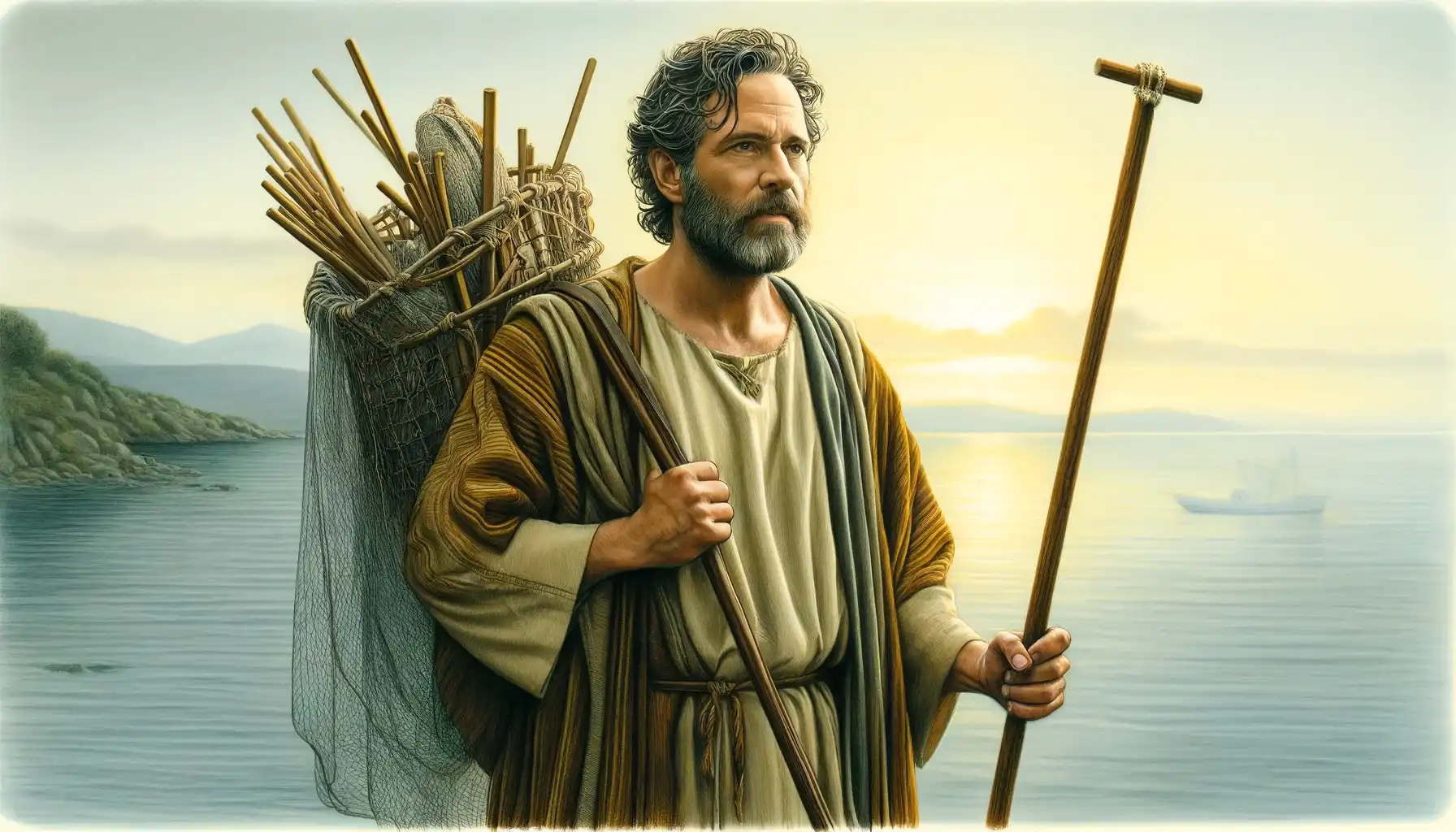
Andrew: Peter’s Brother, also a Fisherman
Andrew, one of the twelve apostles of Jesus, has a distinctive yet somewhat understated role in the New Testament. Here are some quick facts about him:
- Relationship: Brother of Simon Peter, both were sons of Jonah.
- Profession: Initially a fisherman by trade, like his brother Peter.
- Early Follower: Andrew was originally a disciple of John the Baptist before following Jesus.
- Role in Calling: Known for bringing others to Jesus, including his brother Peter, making him the first disciple to recruit others.
- Evangelism: According to tradition, Andrew preached the Gospel in various regions, including Greece, where he is said to have been martyred.
- Martyrdom: Traditionally believed to have been crucified on an X-shaped cross, which is now known as Saint Andrew’s Cross.
- Patronage: Recognized as the patron saint of Scotland, Russia, and Greece.
Andrew, one of the twelve apostles of Jesus, is a figure who combines historical and theological significance with a legacy of evangelism and martyrdom. Known primarily as Peter’s brother and a fisherman by trade, Andrew’s life and ministry offer insights into the early Christian Church’s development and the spread of its teachings.
Background and Early Life
Andrew, like his brother Simon Peter, was originally a fisherman in Bethsaida on the Sea of Galilee. The Gospels of Matthew and Mark introduce him simply as Peter’s brother, underscoring his familial connections which played a significant role in his early spiritual life.
Discipleship with John the Baptist and Jesus
Andrew’s spiritual journey began under John the Baptist, the itinerant preacher who baptized Jesus. According to the Gospel of John, Andrew was a disciple of John the Baptist before he became a follower of Christ. His transition to follow Jesus is marked by a profound recognition of Jesus’ messianic status, prompted by John the Baptist’s declaration that Jesus was the “Lamb of God.” Andrew, upon recognizing this, followed Jesus and is noted for being the first of the apostles to do so. His immediate response was to bring others to Jesus, starting with his own brother, Simon, whom Jesus would later rename Peter.
Role in the New Testament
Although Andrew is not as prominently featured in the Gospels as Peter, he is present at several key moments. Notably, he is mentioned in the feeding of the 5000, where he brings the boy with five loaves and two fish to Jesus, an act that sets the stage for one of Jesus’ most famous miracles. This episode highlights Andrew’s role in facilitating important events in the ministry of Jesus through seemingly small but significant acts.
Later Traditions and Martyrdom
Post-resurrection, Andrew is said to have spread the Gospel around the shores of the Black Sea and throughout what is now modern Greece and Turkey. His missionary journeys reflect the apostolic mission to spread Christianity beyond the immediate confines of Judaism.
The tradition holds that Andrew was martyred by crucifixion in Patras, Greece. He was bound, rather than nailed, to an X-shaped cross, now commonly known as Saint Andrew’s Cross, reportedly at his own request because he did not feel worthy to be crucified in the same manner as Jesus. His martyrdom has become a central element of his legacy, symbolizing his devotion and commitment to his faith.
Legacy and Veneration
Andrew’s impact is perhaps most visible in his role as the patron saint of several countries, most notably Scotland, where the Saltire, a representation of the X-shaped cross, forms the national flag. He is also the patron saint of Russia and Greece, reflecting the broad geographic impact of his evangelistic missions.
Conclusion
Andrew is a compelling figure in Christian history, embodying the zeal and humility of early Christian apostleship. His life and ministry exemplify the spread of Christianity through personal witness and martyrdom, while his actions as portrayed in the Gospels reflect a deep commitment to facilitating the work of Christ among humanity. His legacy continues to inspire faith and devotion, capturing the essence of apostolic service and sacrifice.
Leave A Reply
You must be logged in to post a comment.




1 Comment